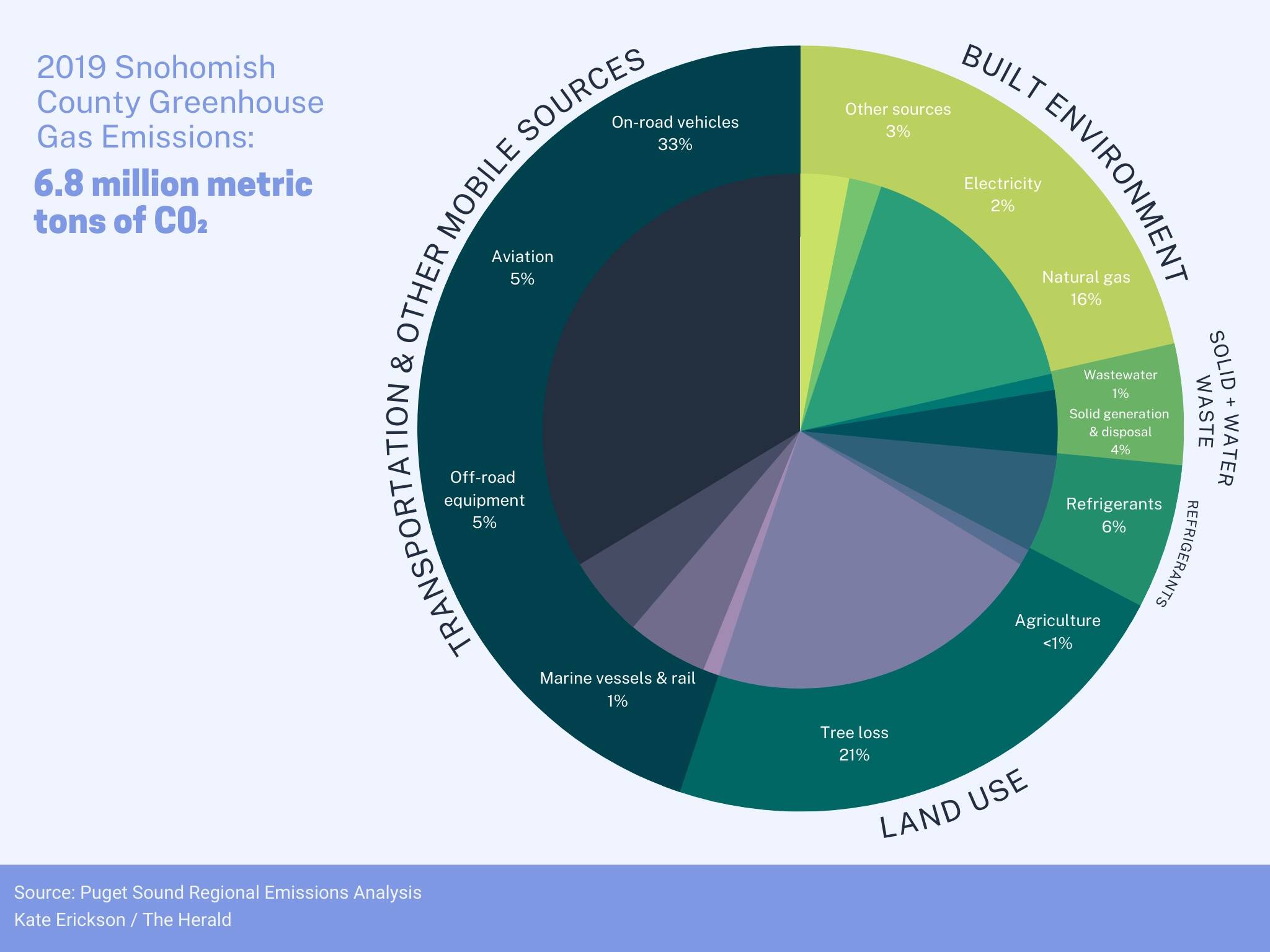EVERETT — A report released last month shows Snohomish County’s greenhouse gas emissions are on the rise, though lower than expected, following significant population growth in recent years. County sustainability leaders say the data will help them orchestrate bigger changes in years to come.
The Snohomish County Communitywide Geographic Greenhouse Gas Emissions Report, released in late January, compared data from 2015 with data from 2019, the most recent study year.
Molly Beeman, the county’s energy and environmental sustainability manager, said the report uses relatively old data because it must come from a wide variety of sources over a long period of time. It wouldn’t be possible to use 2022 numbers because they’re aren’t all available yet, Beeman said.
The report shows Snohomish County’s emissions increased by 7% since 2015, linked in part to a population growth of 8% over the same period. Per person, emissions actually went down by 1%.
A growing population, changing land use and colder winters were the chief drivers of the uptick in emissions, the report said. Cooler temps meant the average rate of natural gas and electricity consumption went up. And a loss of tree canopy and other green space in favor of expanding development mean there’s less vegetation to sequester the carbon being released into the atmosphere, Beeman said.
At the same time, improvements to vehicle efficiency and decreasing fossil fuel usage for electricity contributed to the small per-capita decrease, Beeman said. But transportation is still by far the biggest emissions culprit, releasing 45% of the county’s total greenhouse gases. About a third of the total emissions can be pinned on cars, but aviation and off-road equipment each contributed about 5%.
If no action is taken to continue reducing output, the report figures Snohomish County’s emissions would increase by 66% by 2050. But under existing federal, state and regional regulations, those figures are likely to go down by 20% by the same year, the report found.
Beeman said “considerable” action will need to be taken to meet the county’s goals of a 50% reduction in emissions by 2030, 70% by 2040 and 80% by 2050. Right now, she said county agencies are taking a “30,000-foot” approach, looking at larger, systemic changes to be made in coming years that will hopefully lead to far-reaching ripple effects later.
In a press release announcing the findings, Snohomish County Executive Dave Somers said: “It is only through regional cooperation that we will be able to address the twin challenges of adapting to climate change and reducing greenhouse gas emissions. Doing nothing is not an option, or our economy, environment, and quality of life will suffer.”
Since the county’s most recent climate study in 2015, Beeman said agencies have started working to develop those far-reaching programs. About 30 county departments banded together to form a committee collectively striving to reduce each department’s emissions, she said, the first time such a group has formed in the county’s history.
Climate resiliency and emissions reduction have also been incorporated into the county’s Comprehensive Plan for the first time, Beeman said. She anticipates the next update will factor climate in even more heavily. The plan is designed to serve as a blueprint for county priorities over the next 20 years, with small changes along the way. It will be updated in 2024, and a multi-phase public comment period is currently underway.
Participating in the planning process, Beeman said, is one way Snohomish County residents can get involved with proactive climate efforts, as well as using existing programs the county operates. Several, like the Savvy Septic and Weatherization programs, are designed to help homeowners maximize their home’s efficiency, she said. Others like the Healthy Forest Project encourage volunteers to help maintain vital tree canopy.
“This is the first time that this large of an overarching group in our county has been seriously working on climate change resiliency, and I expect that the results of this work will mean some very comprehensive planning to reduce greenhouse gas emissions and plan for climate change,” Beeman said. “It’s not just reduction at this point. It’s about resiliency, but it’s also about mitigation. Climate change is here.”
Riley Haun: 425-339-3192; riley.haun@heraldnet.com; Twitter: @RHaunID.
Talk to us
> Give us your news tips.
> Send us a letter to the editor.
> More Herald contact information.


























